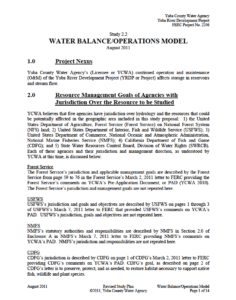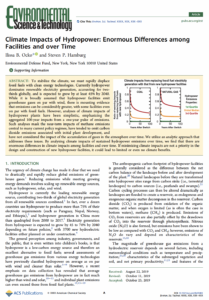The Possible Impacts of the EPA Redefining “Waters of the United States” on the Yuba Watershed
Enacted in 1972, the Clean Water Act established a nationwide approach to improving the quality of our nation’s lakes, rivers, streams, and other water bodies. One of its features is that it prohibits the discharge of pollutants from a point source into “navigable waters” unless otherwise authorized under the Act. “Navigable waters” are defined in the Act as “the waters of the United States, including the territorial seas.” Thus, “waters of the United States” is a threshold term establishing the geographic scope of federal jurisdiction under the Clean Water Act. The term “waters of the United States” was not defined by the Act but has been defined by the U.S. Environmental Protection Agency (EPA) and the U.S. Department of the Army in regulations since the 1970s and jointly implemented in their respective programmatic activities.
The Supreme Court’s Decision in Sackett v. EPA, issued on May 25, 2023, created uncertainty for Clean Water Act implementation by calling into question the geographic scope of the term “waters of the United States”.
Now, only three months after the Sackett decision, according to an Environmental Protection Agency Press Release issued on August 29, 2023, “the U.S. Environmental Protection Agency (EPA) and the U.S. Department of the Army announced a final rule amending the 2023 definition of ‘waters of the United States’ to conform with the recent Supreme Court decision in Sackett v. EPA. The agencies are committed to following the law and implementing the Clean Water Act to deliver the essential protections that safeguard the nation’s waters from pollution and degradation. This action provides the clarity that is needed to advance these goals, while moving forward with infrastructure projects, economic opportunities, and agricultural activities.”
A follow-up Press Release by the Waterkeeper Alliance (of which SYRCL is a member), stated, “The rewrite significantly narrows the range of waters previously protected under the definition of waters of the United States (WOTUS) and opens the door for industries to contaminate and destroy wetlands, streams, and other waterways, which play a fundamental role in providing and safeguarding clean water. Under limits announced by the Supreme Court, it is estimated that at least half of the wetlands in the lower 48 states have lost their Clean Water Act protections and development projects – including pipelines, mines, and large-scale housing and business development – will be allowed to move forward without meeting federal water quality protections. EPA’s rule, announced today, unfortunately, goes even farther than Sackett requires, and potentially leaves a multitude of other waters unprotected in contravention of EPA’s directive to protect and restore the nation’s waters.”
The State Water Board released the following statement, “The ruling effectively requires California to increasingly rely on its own regulatory wetlands protection programs, deprives the state of expertise previously provided by the U.S. Army Corps of Engineers, and affects multiple neighboring states.”
Alecia Weisman, SYRCL’s Headwaters Science Program Director, notes that, “wetland environments are invaluable due to the outsized ecosystem benefits that they provide, including carbon storage, water quality and storage, and flood attenuation. They also serve as effective fire breaks and provide high quality climate refugia habitat for pollinators, amphibians, fish, and birds. At a time when the state of California is investing in restoring wetland habitats due to their efficacy as a nature-based solution used to fight the climate crisis and extended drought, it seems surreal that the EPA would put these sensitive ecosystems under increased threat.”
SYRCL’s Executive Director, Aaron Zettler-Mann, added, “This decision is a disaster for clean water across the western US. Meadows and wetlands are crucial as natural water storage ecosystems which sit at the top of the forests-to-faucets system the arid west relies on. The EPA’s rule makes it easier than the Sackett ruling required to pollute our water and destroy ecosystems which are crucial to climate resilience.”
The EPA Press release goes on to note that the EPA and the U.S. Department of the Army will host a public webinar on September 12, 2023, to provide updates on the definition of “waters of the United States.” For registration information, please visit EPA’s webpage for the amendments rule. The agencies also plan to host listening sessions this fall with co-regulators and stakeholders, focusing on identifying issues that may arise outside this limited rule to conform the definition of “waters of the United States” with the Sackett v. EPA decision.
This post originally appeared on SYRCL.


